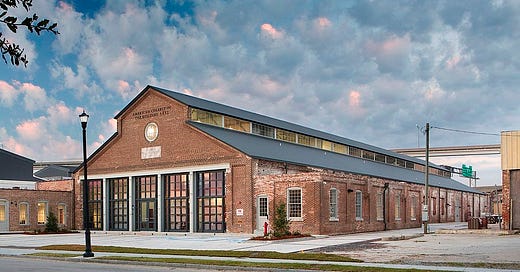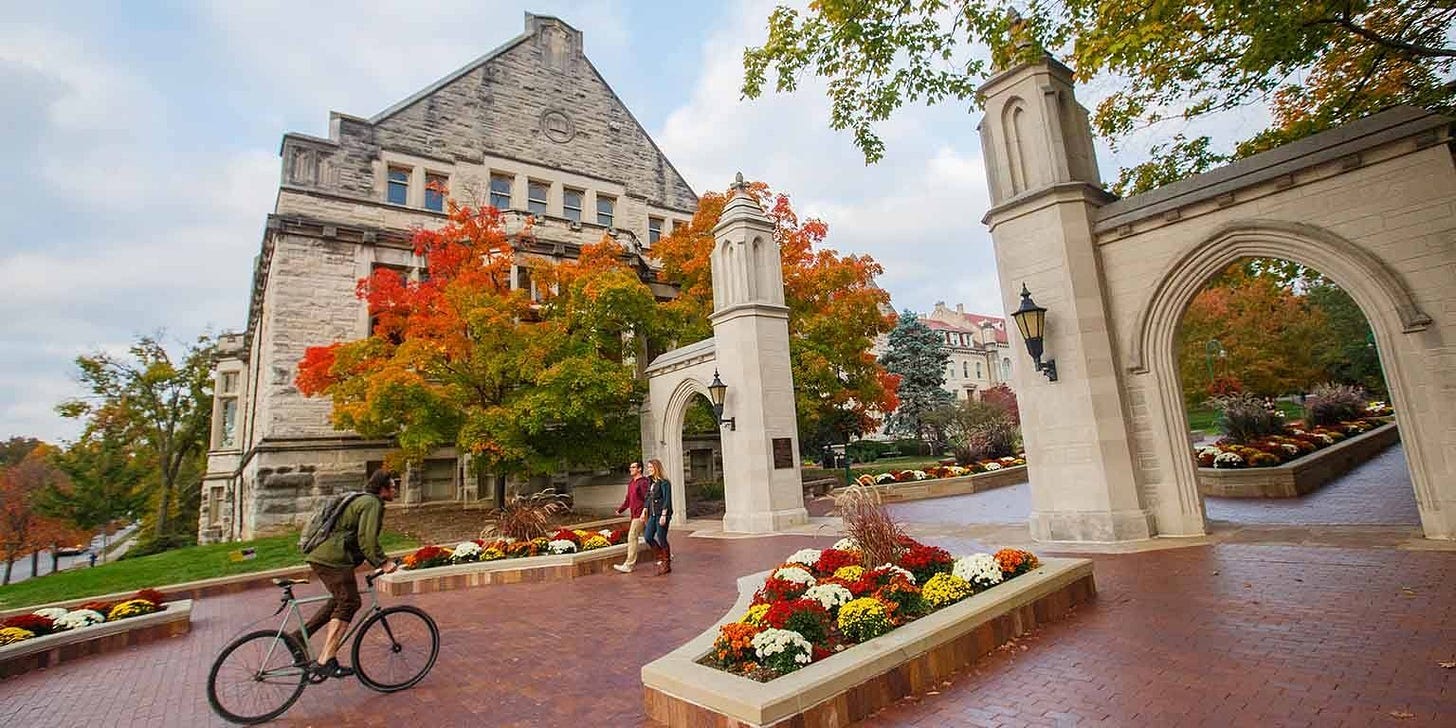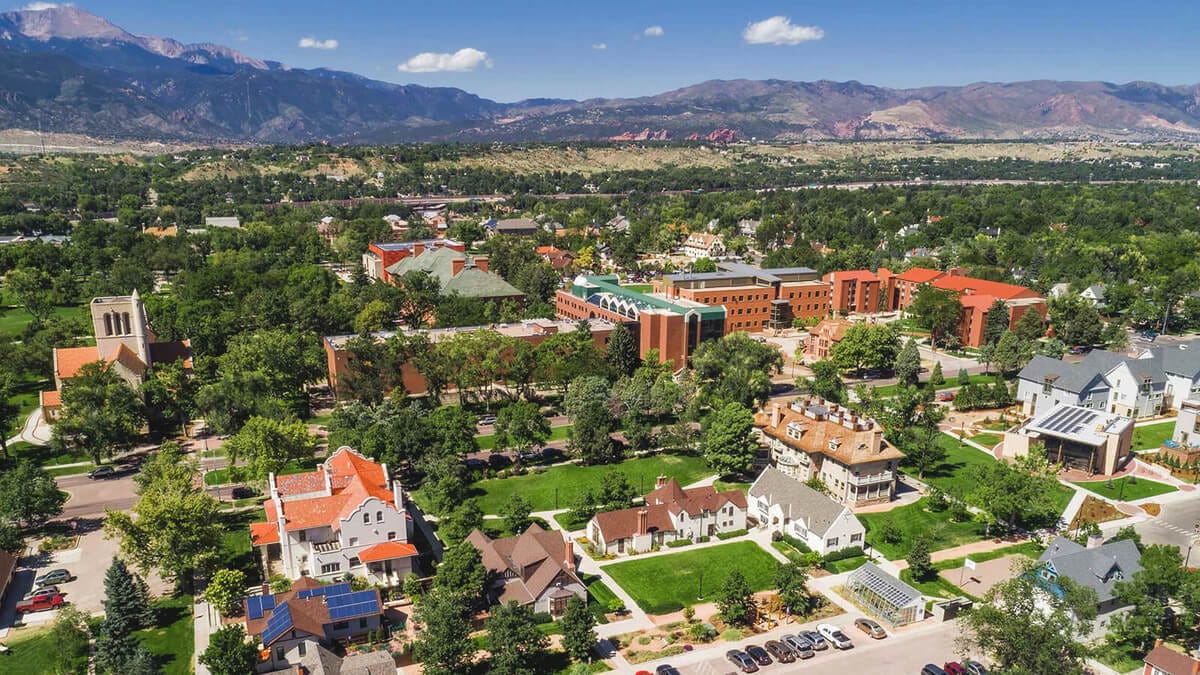I recently watched a video from
about issues facing the modern university. One thing he highlighted was that the mission of the university is out of balance. He talked about prioritizing secondary elements, like athletics, above the academic mission of the institution.But it made me wonder whether the mission statements of institutions were also as unclear as their missions in practice.
I wrote about this issue in a previous post, noting how easy it is for mission statements to devolve into jargon-heavy ambiguity. Today, I’d like to see what kinds of approaches universities are taking with their mission statements and whether we can actually learn anything about their lived missions from those statements.
I found mission statements from a variety of usual and unusual institutions. My goal was to see if I could identify any patterns in how these statements are constructed from this sampling.
A few public statements
I’d like to start with some public universities.
Perhaps the most straightforward is the institution I currently attend: Indiana University-Bloomington.
Our mission is to create, disseminate, preserve, and apply knowledge
Scholars will sometimes refer to the university as a “knowledge factory,” and this embraces that image. Of course, it seems to ignore many things that seem to be part of Indiana’s practical mission. They also want to have a successful football team, run a statewide medical care system, and maintain a beautiful campus. Maybe you can shoehorn all of that into a broad definition of “knowledge,” but the simplicity seems a little deceiving.
Of course, this might also be a function of a multiplicity of mission statements. Institutions operating at the scale of Indiana have separate mission statements for each of their constituent units. So, maybe a statement like this is simple because each department and office on campus will have its own that must be able to fit under this very general overall mission.
Next, I’d like to look at two more. One is from the University of Michigan, perhaps the most prestigious public educational institution in the country, and one is from Indiana State, a mid-sized regional public university in Terre Haute. I want to see if you can guess which is which.
The mission of [institution] is to serve the people of [location] through preeminence in creating, communicating, preserving and applying knowledge, art, and academic values, and in developing leaders and citizens who will challenge the present and enrich the future.
We transform the lives of students through a high-quality education infused with experiential learning, community engagement and career-readiness. Our students succeed within a culture of inclusion and support that provides the skills and knowledge to impact [state] and beyond.
Could you tell which was which? Are you sure?
The first one was Indiana State and the second one was Michigan. Go back and look; do you see it now?
The fact is that Michigan and Indiana State are about as dissimilar as two public universities can be. Despite how differently they operate, though, they use similarly vague language. Both carry broad allusions to campus culture, personal development, and professional application. It makes me wonder whether mission statements are sometimes intentionally vague in order to say something that can be interpreted differently by different stakeholders who want to interpret it differently.
Anyway, I should also mention that I lied. The first one is actually Michigan; the second one is Indiana State.
But isn’t it weird that my lie was believable?
One weird trick
The rest of the institutions I’ll look at here are private colleges. This is mostly because private colleges are generally weirder.
But not inherently. As I said in that previous post, Drake University put out some real content-light word salad in its mission statement:
Drake's mission is to provide an exceptional learning environment that prepares students for meaningful personal lives, professional accomplishments, and responsible global citizenship. The Drake experience is distinguished by collaborative learning among students, faculty, and staff and by the integration of the liberal arts and sciences with professional preparation.
I think you can boil this down to saying “Drake’s mission is to be a good school.” But looking at this would not tell you anything unique about Drake as an institution.
Some other colleges go for slightly more detail. They use the mission statement to highlight one distinctive aspect of their education, which I will put in bold. I’ll put a few together here:
Rose-Hulman Institute of Technology
The mission of Rose-Hulman Institute of Technology is to provide our students with the world's best undergraduate science, engineering, and mathematics education in an environment of individual attention and support.
Zaytuna College
Zaytuna College aims to educate and prepare morally committed professional, intellectual, and spiritual leaders who are grounded in the Islamic scholarly tradition and conversant with the cultural currents and critical ideas shaping modern society.
The College of Wooster
The College of Wooster is a community of “Independent Minds, Working Together” to prepare students to become leaders of character and influence in an interdependent global community. We engage motivated students in a rigorous and dynamic liberal education. Mentored by a faculty nationally recognized for excellence in teaching, Wooster graduates are creative and independent thinkers with exceptional abilities to ask important questions, research complex issues, solve problems, and communicate new knowledge and insight.
Colorado College
At Colorado College our goal is to provide the finest liberal arts education in the country. Drawing upon the adventurous spirit of the Rocky Mountain West, we challenge students, one course at a time, to develop those habits of intellect and imagination that will prepare them for learning and leadership throughout their lives.
Now there’s still plenty of salad here. Everybody is changing lives and shaping society and getting individual attention. The ubiquity of these kinds of phrases makes them feel like background noise. Colorado College provides its own annotated mission statement so you can see how meaningful each word is, but I remain unconvinced that their “adventurous spirit” is wholly unique.
There are unique things here though. Rose-Hulman is an engineering school. Zaytuna is a Muslim great books college. Wooster has every student conduct mentored research projects. Colorado College does not have semesters; students take one class for a month at a time and that’s it.
All of those things are atypical. Something about their academic distinctiveness made its way into the mission statement. But without being highlighted, it can be hard to identify these curricular croutons amidst the lexical roughage.
The profession is the mission
Some colleges are specifically tied to particular professional paths. Their curricular specificity can allow their missions to be similarly precise. Here are a few examples:
Cooper Union
Our mission is to sustain The Cooper Union as a free center of learning and civic discourse that inspires inventive, creative, and influential voices in architecture, art, and engineering to address the critical challenges and opportunities of our time.
American College of the Building Arts
The American College of the Building Arts educates and trains artisans in the traditional building arts to foster exceptional craftsmanship and encourage the preservation, enrichment, and understanding of the world’s architectural heritage through a liberal arts education.
Webb Institute
To inspire and educate tomorrow’s leaders in an extraordinary learning community focused on engineering and design in the marine field.
These are pretty dense with meaning. Cooper Union is about offering tuition-free education for artists, architects, and engineers. That’s most of the mission statement because that’s most of their mission. The American College of the Building Arts trains artisans who work in architectural preservation while also giving them a traditional college academic experience. That’s what they do and it’s their whole mission statement. Same for Webb and its exclusive focus on marine engineering.
Now, of course, all of these institutions do other things which are not encompassed in the mission statement. But these statements do a good job of putting what sets them apart in their educational outcomes at the forefront.
Perhaps the reason most mission statements don’t say much is that most colleges don’t have an explicit focus. If they were to pull a single curricular element to the fore, that would background their other efforts.
So, rather than failing to highlight every element sufficiently, it’s better to highlight nothing. Rather than mission statement ambiguity being unintentional and thoughtless, perhaps it’s a deliberate means by which institutions avoid conflict between their many disparate organizational sub-units.
Pedagogy is the mission
Lastly, I want to highlight a few institutions who use their mission statements to describe their teaching. The previous group focused on the ends of their education, the professional outcomes. This group focuses on the means of their education, the pedagogy.
Naropa University
We commit to create a more just and regenerative world by nurturing student insight and awareness, courage, and compassion. Through contemplative pedagogy, critical thinking, and active engagement, we offer students the skills they need to authentically engage as effective, mindful leaders.
Reed College
Reed College is an institution of higher education in the liberal arts devoted to the intrinsic value of intellectual pursuit and governed by the highest standards of scholarly practice, critical thought, and creativity. Its undergraduate program of study, leading to the degree of Bachelor of Arts, is demanding and intense and balances breadth of knowledge across the curriculum with depth of knowledge in a particular field of study. The goal of the Reed education is that students learn and demonstrate rigor and independence in their habits of thought, inquiry, and expression.
Deep Springs College
The mission of Deep Springs College is to prepare young people for a life of service to humanity. Leadership and enlightened service are the aims of Deep Springs, which fulfills its educational mission by bringing students into intense contact with nature, work, and ideas.
Deep Springs’ challenging and comprehensive educational program is designed for a few of the most promising students entering college each year. No tuition or fees are levied, but strenuous effort, self-governance, and selfless service to the community are expected of everyone.
Those who are educated at Deep Springs incur a lifelong obligation to improve the human condition.
Any references here to the “end” of education focus on how graduates will live, not in which field they’ll work. These statements are about what makes the experience of pursuing a degree at each institution distinct.
Naropa defines itself as the most contemplative educational institution in America. Reed made a clear effort in its mission statement to see how many different ways they could say “We are a difficult program.” Deep Springs outlined their unique tuition-free, collaborative, strenuous lifestyle as being preparation for a life of service.
These present core pedagogical values (e.g. mindfulness, rigor, service) without burying them amidst other platitudes.
Some of these places are stranger campuses than others. But all of them are at least a little strange. By leaning into their little strangenesses unapologetically, they make their mission statements make a statement.
No salad to be found.
Do we need mission statements?
I mean, I don’t know. Maybe not.
For institutions whose mission statements seem to serve mostly as ways of distracting from rootlessness of their identity, I don’t think a mission statement would be missed. Maybe it’s helpful for accreditation. Maybe a faculty committee insisted on it. But can you really be guided by something that does not point to a goal?
One alternative I found would be to follow Berea College’s approach: eight great commitments.
Instead of trying to cram every disparate element of an enterprise into one jargon-laden run-on sentence, they don’t even try. They have separate pages for eight different elements that guide their work. They don’t artificially shorten their expression; each commitment stands on its own.
The question, though, is how many colleges, given as much space as they might want, could come to a consensus on what they’re committed to.
-Matt








I've been involved in many mission statement writing exercises. I'm not convinced it's worth the effort. Two reasons.
They are so often vague, as you note. They very seldom articulate anything that another group could also say (see Michigan vs Indiana State!).
More fixable (yet seldom fixed) is asking "If we fulfill our mission, how would we observe it?" That would give shape and meaning to a mission statement. Yet, most orgs are reluctant to do that difficult work.
Good stuff!